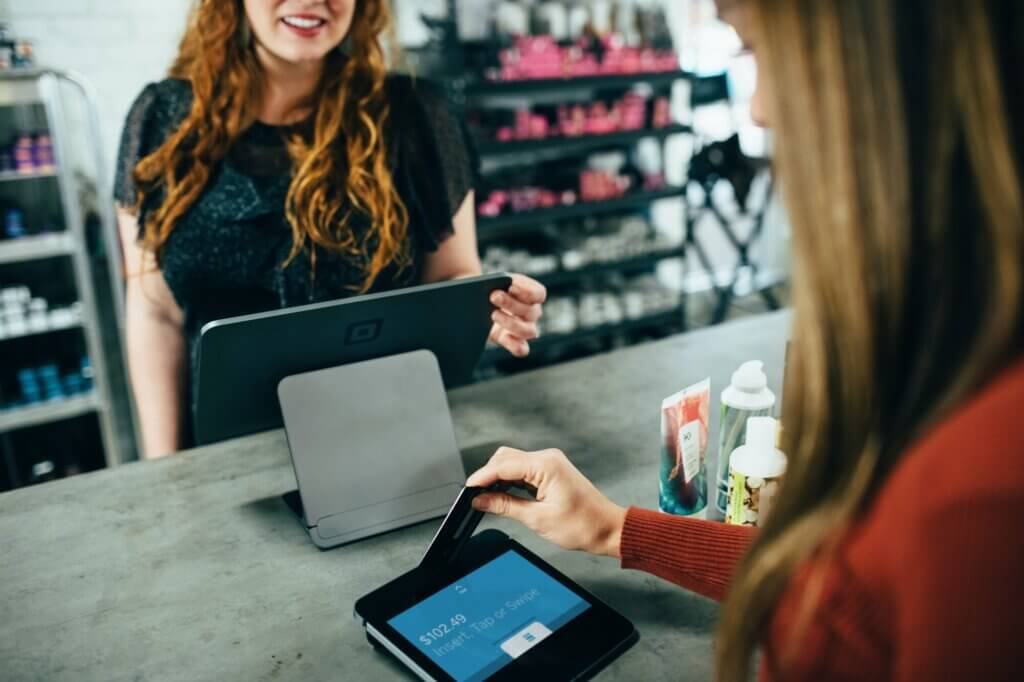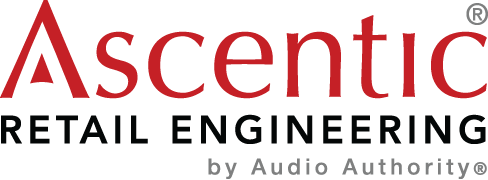
You’ve likely heard the phrase “the customer is always right” and in the modern age, this statement rings truer than ever before. Customer satisfaction is at the heart of every retail store. As much as 70% of the buying experience is based on how the customer is treated.
Without the proper protocols in place, you’re likely to miss out on valuable business from repeat customers and word-of-mouth referrals. You can monitor and maintain many elements of the customer experience through customer satisfaction key performance indicators.
Following these KPIs below will give you vital information you can use to improve your business.
Customer Feedback and Surveys
By offering customer surveys, you’re tapping into genuine retail market research. This means you’re receiving insights directly from the customers themselves.
Utilize customer service display tablets to register customer feedback on the in-store experience. Having a dedicated retail display fixture for collecting customer feedback is essential for user engagement. It shows you care about your customers and strive for ways to offer the best possible shopping experience.
Another method for gathering customer feedback is through survey codes on receipts. After a customer fills out a survey, they may receive a discount for their next visit as an added incentive. This leads to repeat customers.
You can use this feedback to help you identify areas where your retail store could benefit from improvement.
Net Promoter Score (NPS)
A Net Promoter Score (NPS) is another one of the top customer satisfaction key performance indicators. The NPS shows you the likelihood of customers recommending your store to others. This is where word-of-mouth comes into play.
88% of consumers place the highest amount of trust in word-of-mouth recommendations from those they know. You ask consumers to rate on a scale of 0-10 how likely they would recommend your retail store to others.
These scores are then broken down into the following categories:
- Promoters- a score of 9-10
- Passives- a score of 7-8
- Detractors- a score of 0-6
Promoters are the most likely to recommend your retail store. Passives experience moderate satisfaction but may not be as enthusiastic at actively recommending your store. Detractors are those who could potentially harm your reputation through negative reviews.
Customer Retention Rate
Customer retention is another one of the best customer satisfaction key performance indicators. With the customer retention rate, you can track the percentage of customers who make repeat purchases over a given period of time. This helps you identify your most loyal customers.
Businesses are often able to increase sales through a steady stream of repeat customers compared to new customers. So it’s important to find ways to build your customer base. You’ll also see how customer loyalty factors into your business model.
Setting up an in-store loyalty program is a great way to attract repeat customers. Once you’ve identified your loyal customer base, you can send out coupons and promotions.
Average Transaction Value (ATV)
The Average Transaction Value is an important aspect of customer satisfaction. Happier customers tend to spend more when tied to a positive in-store experience.
Analyze your sales data to calculate the average amount spent for each transaction. From there, you can evaluate ways to drive up your ATV.
One of the ways you can do this is by offering coupons or discounts. Customers who feel like they’re getting a deal will be led to buy more as a result.
You can also implement upselling tactics to help your store increase sales. For example, placing an interactive retail store display near the checkout with an assortment of impulse items.
Service Responsiveness
Your retail associates are often the first point of contact your customers encounter in-store. As much as 81% of people claim that receiving good customer service makes them more likely to make another purchase.
Service responsiveness is an integral part of customer satisfaction key performance indicators. Customers who have to search around to find an employee or wait for service may have a less than favorable opinion of your store.
You must train your staff to act promptly and provide assistance to customers. Monitor associates to see how quickly they greet and address customers. Evaluate customer feedback to see if there are any areas of improvement needed regarding responsiveness.
Employee Satisfaction
Employee satisfaction can have a direct correlation to customer satisfaction. An employee who is happy with their job is more likely to provide customers with excellent service. This, in turn, leads to increased customer satisfaction.
You should also conduct regular employee satisfaction surveys. This will allow you to see any obstacles that could be preventing employees from positive customer interactions. You will also be able to identify specific employee concerns.
It’s important to not overlook your employees in relation to customer satisfaction. Keeping employee morale high helps you improve your in-store experience for everyone involved.
Store Cleanliness and Atmosphere
Your in-store experience can make or break customer connections in an instant. You want to do your best to create a positive first impression. This entails performing routine cleaning and organizing.
Factors such as lighting and music also play a big role in positive customer experiences. You may even want to include pleasant scent elements to enhance your store’s atmosphere.
Investing in appealing store layouts to assist with visual merchandising. This will help draw the eye of shoppers to certain products you may wish to feature. It also allows you to manage the flow of your store in a way that is most appealing.
Efficiency at Checkout Process
The checkout is one of the most crucial factors impacting customer satisfaction. A customer could have had a great in-store experience everywhere else in your store. But a poor checkout experience can potentially derail it all.
Long wait times and large lines at checkout may make customers abandon their purchases altogether. If an employee is having difficulty with a POS system, this can add to the delays. A lack of payment options can contribute to customer dissatisfaction as well.
Some retail stores have implemented mobile checkout apps to improve efficiency. You may want to consider adding self-pay kiosks to aid in a speedier checkout process. Updating POS systems to handle a variety of different payment methods is also key to improving customer satisfaction.
Product Availability
Nothing is more frustrating for a customer than going into a retail store with a particular product in mind only to discover it isn’t in stock when they get there. Not having the proper product availability can hurt your business. Customers will likely go to a competitor to find it there instead.
Use the Internet of Things (IoT) to track inventory management. When an item is removed from a shelf, sensors automatically update inventory to reflect the most accurate stock. In-store digital signage and mobile apps can also update customers on an item’s availability within the store.
Visual Merchandising
Visual merchandising is an essential component of customer satisfaction key performance indicators. By creating visually engaging displays, you can attract customer attention. When used in store window displays, visual merchandising can help draw customers passing by into your store.
Utilizing visual merchandising lets you see which items are the most popular within your displays. Be sure to rotate your merchandise displays regularly to showcase new products. This will also allow you to maintain interest over time.
Use strategic placement to guide customers through the store. Doing this encourages the exploration of other areas. You can even suggest items that pair well together.
In-Store Events and Promotions
Hosting in-store events is a fantastic way to boost foot traffic coming through your doors. It could involve a new product launch, a seasonal promotion, a social influencer signing, or other in-store experience.
Take to online platforms like social media to promote your event. Be sure to note if there are any additional perks included with attendance. Include a functional and measurable RSVP element to gauge interest.
Analyze the data events based on increased sales data from these periods. Compare it to normal store data to monitor the success of your events. This will help you plan for future in-store events and promotions.
Customer Education
Customer education is a prime example of customer satisfaction key performance indicators. If a customer feels well-informed, they will be more satisfied with their in-store experience. It empowers customers to make confident purchasing decisions based on the information presented to them.
Use interactive retail store display kiosks to make the learning process easy and fun. Show instructional or how-to videos to demonstrate the product’s features. You can also hold interactive in-store demonstrations to show a product’s uses firsthand.
Tap into retail market research to address common consumer pain points. Emphasizing customer education is crucial to increase sales and encourage repeat customers.
Enhance Your Customer Satisfaction Key Performance Indicators with Ascentic Today
The retail industry remains focused on seeking out new ways to gain a competitive edge and boost consumer engagement. While there are many customer satisfaction key performance indicators to address, the endgame to increase sales remains.
Ascentic Retail Engineering can help you build a retail store display that will get you noticed. We have over 40 years in the industry and know what it takes to make interactive displays with maximum impact. We stand by our strong Christian faith as the foundation of our business’s moral framework.
Contact Ascentic today to discuss how we can help you with your next project.
